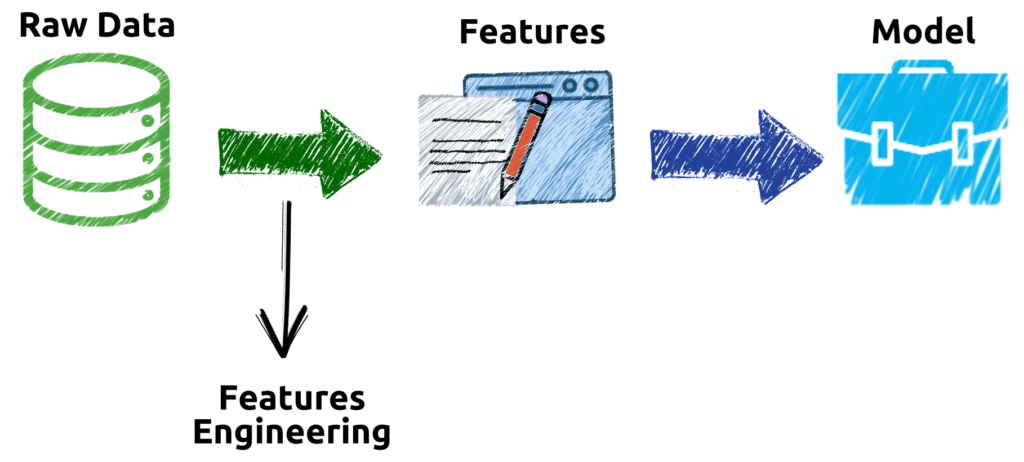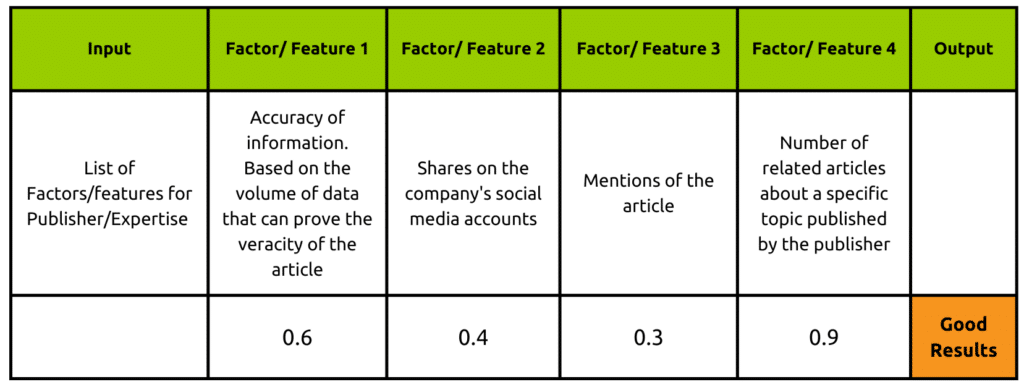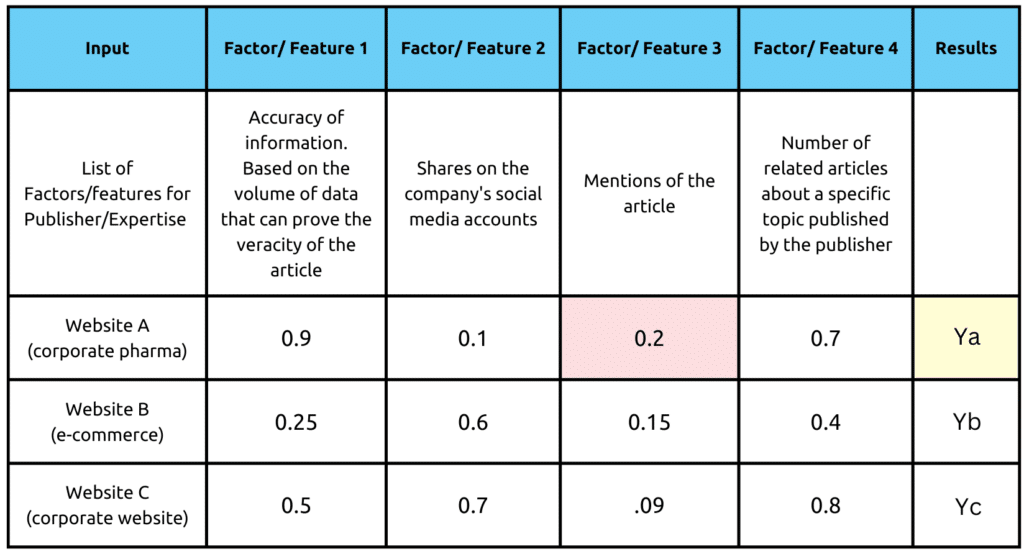Evaluating E-E-A-T: Signals and Factors

What You Will Learn
You will learn a robust theory that explains the “Factors” and “Signals” in Google’s evaluation of E-E-A-T for companies, authors, and content. When you understand the underlying technical approach and triggers, establishing E-E-A-T is simple.
Introduction
Google introduced E-A-T (Expertise, Authoritativeness, Trustworthiness) in 2018. Google added a new “E” for Experience in 2022. E-A-T is now E-E-A-T. Before getting deep into the subject it’s important to give a bit of context.

E-E-A-T is part of the Google Search Rater Guidelines (Guidelines). The Guidelines are used by approximately 10,000 – 16,000 human’s, Search Raters, who are contracted by Google. The Search Raters evaluate Google’s performance in the results it serves to users. The Search Raters evaluate the search results the algorithms serve. It’s fundamental to understand that Google updates its algorithms to ensure they improve the quality of the information they are presenting. This information must be be useful and not harmful.
This brings us to the question what’s the relationship between the Google Algorithm and EEAT. Marie Haynes clarified that in her article What is EEAT. In the article, Marie pointed out that Ben Gomes, Google’s VP of Search said in an interview from CNBC: “You can view the raters’ guidelines as where we want the search algorithm to go. They don’t tell you how the algorithm is ranking results, but they fundamentally show what the algorithm should do.”
Gary Illyes, Analyst in the Google Search Team, pushes it further by saying that “EAT is made up of many, many algorithms, baby algorithms, that are made up of the Google core algorithm.” There is no core component that specifically targets E-E-A-T. Gary also says there is no E-E-A-T score. Using this information, we can deduce that there are specific algorithms for each letter of E-E-A-T.
When EEAT plays a role?
Google made it clear in the Creating helpful, reliable, people-first content post that for E-E-A-T, everything happens in 2 steps.
- Google’s automated system defines relevant content.
- 2. The system must identify a mix of Factors that can help determine which content demonstrates aspects of good E-E-A-T.
The word “Signals” appears in E-E-A-T documentation. For instance, in the post-ranking results Google goes one step further by saying “..our systems…identify signals that can help determine which content demonstrates expertise, authoritativeness, and trustworthiness.”
So we now have 3 questions.
- What does “Factors” mean in the context of E-E-A-T?
- What does “Signals” mean in the context of E-E-A-T?
- How do the two relate to each other?
In the post-ranking results, both terms are used together “..one of several factors we use to help determine this is understanding if other prominent websites link or refer to the content. This has often proven to be a good sign that the information is well trusted.”

We will answer the questions above in the context of E-E-A-T, but this terminology is used in many other cases. But, first things first. Let’s figure out when this happens.
1. A user enters a query in the search box. Google’s language model needs to match the query with the most useful content available.
2. At this point, Google needs to look at the relevance of the content. Here, they need to prioritize those that are the most helpful. To do this, they identify Signals that can help determine which content demonstrates expertise, authoritativeness, and trustworthiness. Google needs signals because it is a machine and doesn’t work like a human. As a result, the machine evaluates Signals. You can learn more about this in the blog post “How Google delivers reliable information in Search”
To understand what Signals are we need to understand what Factors are. So let’s start with Factors.
What Does Google Mean When They Say “Factor”?
Google Factors are what machine learning experts would call “features.” So let’s look at what features are and how they work.
Kevin Stumpf in the article What’s a feature defines a feature as a piece of information that helps a computer learn something. This in itself is an important piece of information. Now, let’s see how that happens before looking at a clarifying example.
Every machine model needs data. However, it’s almost impossible to use raw data to train a machine. You need a selected set of data. This is why there is a process called Features Engineering that helps create a logic in the data that the machine needs to use to be trained. The data used are features (see image).

Factors are nothing more than the features that help define a model. So let’s call them Factors/features for the rest of the article.
In making machine learning work, two things are important.
- An initial set of data
- The final output (see image below). In the case of E-E-A-T, what a machine needs as output is a bunch of websites that are labeled “good” or “bad”. The machine is then able to train.

It’s important to note the machine cannot select the features. Humans choose the features. The initial dataset of features acts as a starting position.
Next, the machine can do the following.
- Tell you if the features you selected are correct or not.
- Create a correlation between different features.
The machine can select features and combine them because it knows what a good website looks like and what a bad website looks like. The machine knows this because of the known output in the machine learning work.
In conclusion, we have learned that Factors are nothing more than features in machine learning and that humans choose the initial set of features, but it is the machine that proves humans right or wrong.
For the machine to provide the output, it needs a set of features for experience, a set of features for expertise, a set of features for authoritativeness, and one for trust. Not all features are equal in weight. Some are more important than others and will have more “value” than others. The machine determines the value.
In the context of E-E-A-T, Google speaks about publisher, author, and content.
What is the relationship between Factor/features and E-E-A-T?
Let’s take an example to better understand.
In the table below, we will analyze some Factor/features related to expertise for publishers. However, before starting, remember what Gary said – there are many baby algorithms. As a result, it doesn’t mean those Factor/features are in one of the algorithms. Nevertheless, for simplicity, let’s put everything together.
It’s important to note that in this example, all numbers are hypothetical
In the table below, the first row gives a list of factors/features that are related to publisher/expertise. Each number corresponds to the value we give to each feature. In our table, the absolute score goes from 0 to 1. Those numbers are determined by the machine, and the features closer to 1 are those that are the most important.

(Note: It’s probably time for a small parenthesis here to make sure that we agree on what “publisher” means. Out of these three terms, publisher is the most ambiguous from my point of view. So let’s clarify the concept. I consider “publisher” as another way of saying the entity behind your website. So that could be your brand or the company that owns you. For example, if we take Kalicube, the entity managing the website is Kalicube. By extension, Kalicube will be the publisher, which means that we need to make sure that Kalicube shows Experience, Expertise, authoritativeness and Trustworthiness.)
This is called Global explanation in machine learning. We can sum it up by saying, “Global explainability spot checks how features in the model are contributing to the overall predictions of the model.”
What Does Google Mean When They Say “Signal”?
Before starting, let’s re-read this sentence from Google:
“One of several factors we use to help determine this is understanding if other prominent websites link or refer to the content. This has often proven to be a good sign that the information is well trusted.”
The sentence confirms that Signals and Factors are not the same thing but are interconnected. As a result, we deduce that Signals are correlated to local explainability in machine learning.
Local explainability explains how a machine learning model made an individual decision.
Let’s take a practical example: If you have a Tesla and the car brakes, you want to figure out why that happened. Maybe it was just because there was a pedestrian crossing. If we think about this example and do a bit of reverse engineering, then we know that a machine can judge a single case. This means Google could judge a website with this approach. I don’t need to know why, but I know that based on the global features, the machine can judge my website.
Google knows that not all websites are the same and not all domains are equal. For instance, what’s good for an e-commerce firm selling shoes is not good for a corporate website in the pharmaceutical industry. So, we need to create a distinction.
So, let’s suppose that website A is a corporate website in the pharmaceutical industry. The accuracy of the information is critical. This means the Factor/feature mentions will have a lower value than the accuracy of information.
This leads me to hypothesize that each Factor/feature could have a different weight based on the type of website. This would modify the global value of each Factor/feature we have seen initially.

Now we have a new equilibrium and new numbers thanks to the change of weight for each feature related to a specific industry.
Conclusion about the difference between Factors and Signals
Factors are what machine learning experts call features. While some Factors can be guessed by SEO experts, it is impossible to know what values the machine places on each one because the machine is a black box. The values become more challenging when Signals come into play and recalibrate the black box again.
We know what Google is trying to measure – Experience, Expertise, Authoritativeness, and Trustworthiness. Google does not share what Factors its engineers have given to the algorithms, and even they don’t know what Signals the machine learning algorithms are taking into account and what importance they apply to each.
If that sounds dispiriting, don’t worry. The secret to the “black box” is always the same.
- Build your E-E-A-T because you need to earn it.
- Demonstrate E-E-A-T to your audience transparently and honestly
- Package your transparent, clear, and convincing demonstration of E-E-A-T so that Google understands.






